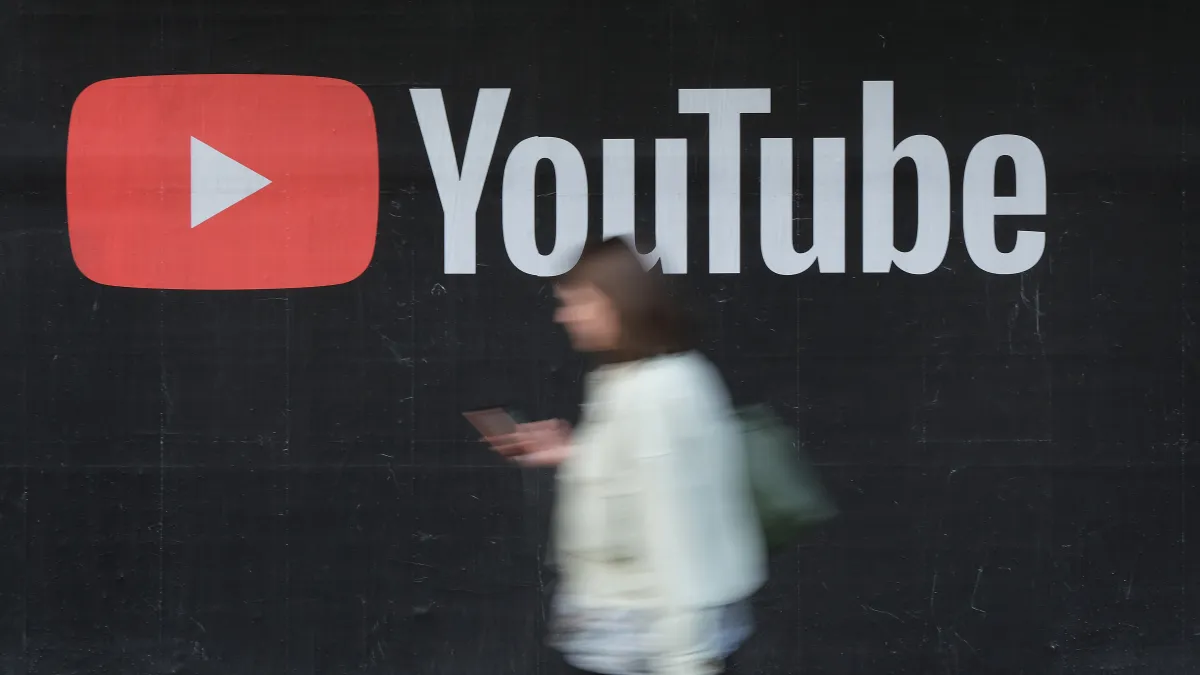YouTube is rolling out a revenue-sharing program for Shorts early next year, one of several announcements tied to the TikTok lookalike made at the company’s inaugural Made on YouTube event. The platform claims this is the first time such a payout model is being applied to short-form video at scale, a strategy it’s enacting as the war for brand dollars and creator talent intensifies.
“We want to support creators in all the ways they're using YouTube to tell their stories, including the mobile-first generation of creators making YouTube Shorts,” said Neal Mohan, YouTube’s chief product officer, during a livestream of the event held in Los Angeles Tuesday.
Revenue sharing for Shorts operates differently than other areas of YouTube since the format is set up in a scrolling feed without the usual ad placements. YouTube will pool together revenue generated across Shorts on a monthly basis to pay creators and help them cover music-licensing costs. Creators keep 45% of the revenue, which is distributed based on the amount of total Shorts views they command, and those who don’t use music won’t see their cut affected.
The move marks a shift away from a fixed $100 million fund launched in May of last year that helped creators earn money from Shorts. Shorts started testing in 2020 but has steadily become a focus for YouTube as other aspects of its business slow down.
“We started with the Shorts fund as a first step, but creator funds can't keep up with the incredible growth that we're seeing in short-form video,” said Mohan. He said that Shorts attract 30 billion views from 1.5 billion logged-in users per month.
Additionally, YouTube is making Shorts a pathway to the YouTube Partner Program (YPP) that’s existed since 2007 and helped turn DIY video makers into some of the most influential and high-paid internet celebrities.
Beginning in 2023, creators who have at least 1,000 subscribers and draw a minimum of 10 million Shorts views over 90 days can apply for YPP and perks therein, such as monetization from across Shorts and long-form videos. YouTube said it also plans to introduce a YPP tier with lower requirements for eligibility so a greater number of creators can access follower funding options like stickers, chat benefits and channel memberships.
“With the transition to revenue-sharing and expansion of fan-funding, we expect the majority of our Shorts fund recipients to earn more money under this new model,” said Mohan. “This will give far more people a voice.”
Fresh incentives
Keeping creators within the YouTube ecosystem is important as the platform contends not only with TikTok — the dominant short-form video destination — but also copycats from the likes of Instagram and Snapchat. Marketers at the same time are getting choosier with their budgets in a down economy, meaning they may spend less on a fewer number of channels.
YouTube eyeing Shorts as a more substantial revenue driver comes as the platform has become a weak point for parent company Google in a comedown from earlier pandemic highs. The site grew revenue just under 5% year-on-year in the second quarter, below analyst expectations. For contrast, YouTube saw revenue spike 84% YoY in Q2 2021.
Executives emphasized that a monetization push around Shorts isn’t intended to steal focus from mainstay formats like long-form video. Rather, the company is promoting the idea of multi-format creators who use different video lengths for different types of content and experiences.
Those reassurances come as Shorts has brought fresh faces into the fold: 40% of the Shorts fund’s recipients had never gotten a check from YouTube before. YouTube is also encouraging its old guard to give Shorts a try as it looks to the fledgling offering as a growth driver.
Cooking channels, for instance, might be interested in branching out to other topics, but not want to risk a hit to engagement for posting subject matter that’s not proven to resonate. Shorts could be a method of testing followers’ appetites for new ideas before making a bigger buy-in.
That said, YouTube also thinks Shorts could be a viable standalone source of income for creators in the near future based on its prior successes in monetizing video.
“Our belief is that you should be able to make a living off of any format,” said Tara Walpert Levy, YouTube’s vice president of Americas and global content. “It's early days in Shorts, but we're seeing a lot of encouraging signs, whether it's the ad interest or some of the other revenue streams that we've recently made available like brand deals or shopping.”
Kris Collins, a creator who shares comedic content under the name Kallmekris, said she has used Shorts to pull people into her channel while making her actual living off of ads around long-form material. That trade-off could go away with the latest updates.
“This is a huge incentive for me to put all my work into one place,” Collins said during the show. She later added that other platforms are centered on getting creators “15 seconds of fame.”























